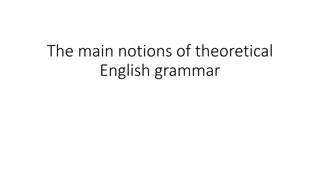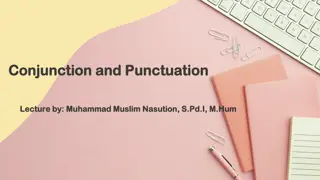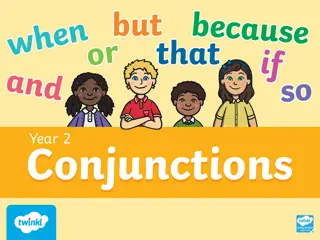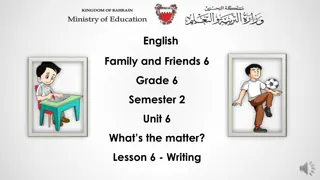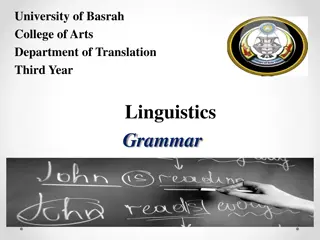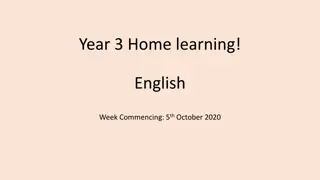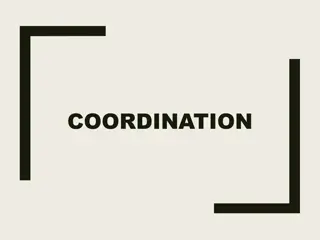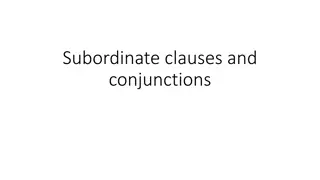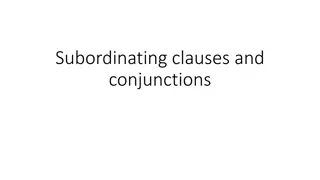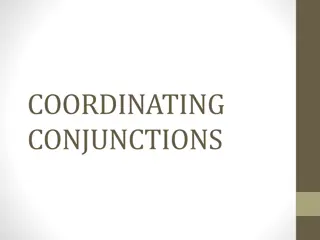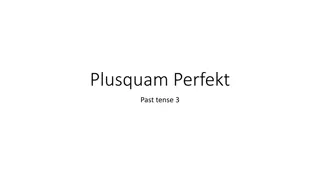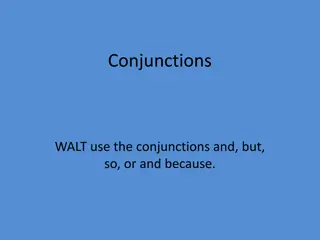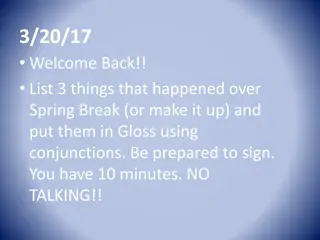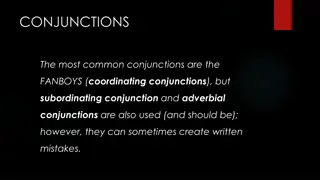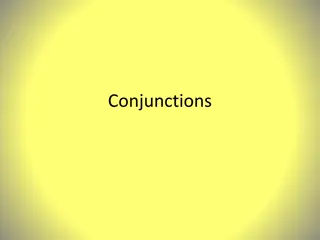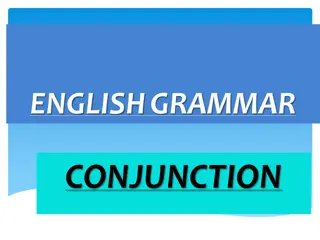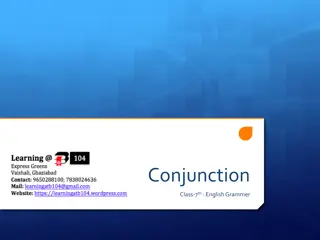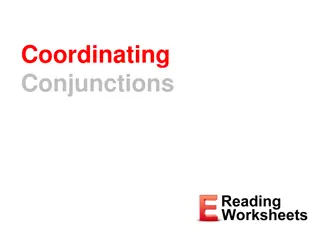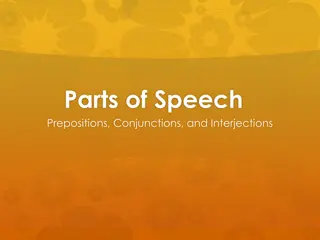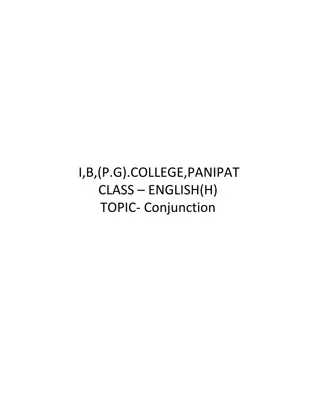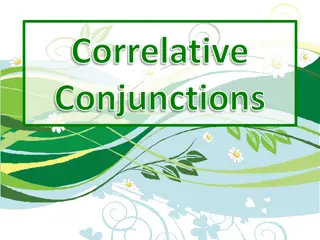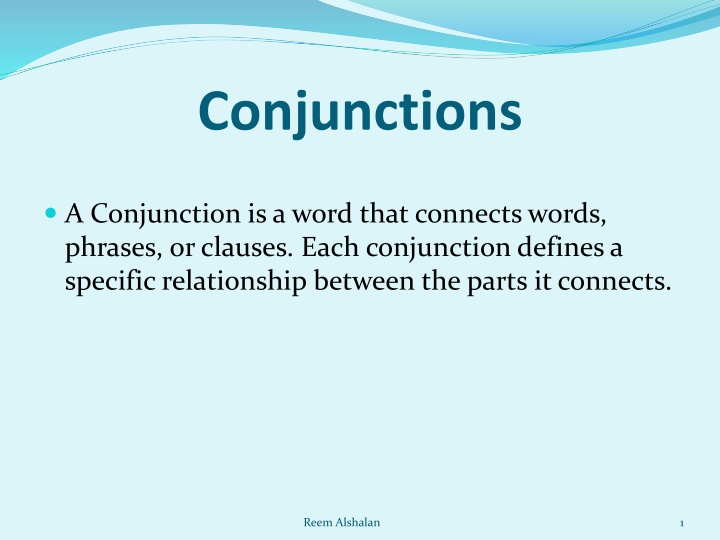
Conjunctions and Their Types
Explore the world of conjunctions and learn about the four types - Coordinating, Correlative, Subordinating, and Conjunctive Adverbs. Discover how these words connect various parts of a sentence and enhance its structure. Engage in an exercise to identify and distinguish different types of conjunctions.
Download Presentation

Please find below an Image/Link to download the presentation.
The content on the website is provided AS IS for your information and personal use only. It may not be sold, licensed, or shared on other websites without obtaining consent from the author. If you encounter any issues during the download, it is possible that the publisher has removed the file from their server.
You are allowed to download the files provided on this website for personal or commercial use, subject to the condition that they are used lawfully. All files are the property of their respective owners.
The content on the website is provided AS IS for your information and personal use only. It may not be sold, licensed, or shared on other websites without obtaining consent from the author.
E N D
Presentation Transcript
Conjunctions A Conjunction is a word that connects words, phrases, or clauses. Each conjunction defines a specific relationship between the parts it connects. Reem Alshalan 1
Conjunctions There are four types of conjunctions: 1- Coordinating Conjunctions 2- Correlative (paired) Conjunctions 3- Subordinating Conjunctions 4- Conjunctive Adverbs Reem Alshalan 2
1. Coordinating Conjunctions 1- A coordinating conjunction joins sentence parts that have the same grammatical form. I ate an apple and an orange 2- A coordinating conjunction can join two independent clauses to make one sentence. - I ate an apple and I ate an orange - Coordinating Conjunctions are sometimes called Fan Boys - For, And, Nor, But, Or, Yet, So. Reem Alshalan 3
2. Correlative(paired) Conjunctions Correlative Conjunctions are always in pairs. They are similar to coordinating conjunctions in that they join sentence parts that have the same grammatical form. Both and Not only but also Either or Neither nor Whether or not Reem Alshalan 4
3. Subordinating Conjunction A subordinating conjunction is the first word in a dependent clause. It shows its relationship with the main clause. For example: I can not go to the party because I have work to do. Reem Alshalan 5
4. Conjunctive Adverbs A conjunctive adverb can appear at the beginning, in the middle, or at the end of one independent clause, but we often use them to connect two independent clauses. * If they begin a new sentence, they are followed by a comma. She finished reading. Next, she went into the kitchen. * The may follow a semicolon, and are followed by a comma if an independent clause follows. She finished reading; next, she went into the kitchen Reem Alshalan 6
Exercise Circle the conjunctions in the following sentences and identify their type. 1. John is my brother, and Sara is my sister. .. 2. She will eat ice cream whether she eats cake or not. .. 3. After I went to bed, I fell asleep. .. 4. I studied hard; therefore, I got an excellent grade. .. Reem Alshalan 7

